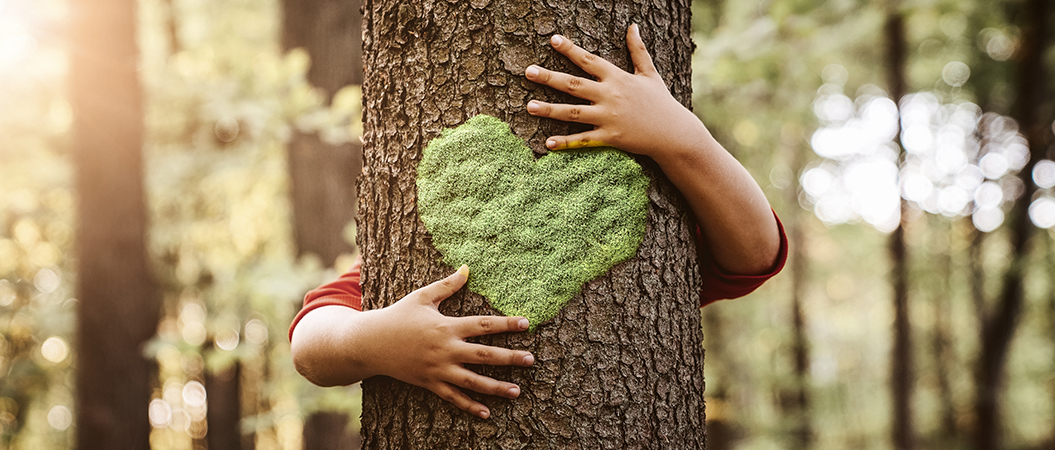Now that we know trees talk to each other and that maybe we can talk to them, what on earth should we talk about?
Scientists are said to be on the brink of unlocking the secret ways in which trees keep in touch with each other. In this reality check, we take a quirky look at the idea and think about a useful agenda.
It is official, or almost anyway: trees talk to each other. That is to say, highly respected scientists are telling us that research has proven trees have a unique but recognizable way of communicating certain facts of tree life to one another, even when out of earshot. Exactly what the trees are saying remains to be learned. However, there are serious suggestions now on the table that further scientific research will unlock their language, and those able to learn it can look forward to some fascinating conversations.
In this blossoming green age when there is so much concentration on nature and our need to respect it, the tree talk topic comes as no great surprise, but it does raise the question: does grass talk too? And what about garden plants? And the weeds? These and others like them are likely to be among the first of many interesting posers we can put to the forest when we have cracked that first ground-breaking code.
There are many tough problems to solve before this code is indeed crackable, and then a few more before we can sit down in the orchard and have a chat. For a start, if not sound waves, what is the medium of tree communication? A lady by the name of Suzanne Simard, who has spent 30 years studying trees in British Columbia, says they communicate through an underground fungal network. Through their smallest roots and the fungal contact they learn things about the forest generally and about individual trees in particular. Simard says this is a complex symbiotic network that actually can move resources from an area of plenty to where they are absent or scarce and needed most.
Other scientists aver that trees can communicate via pheromones, other scenty things, and slow pulsing electricity. Simard herself believes they pass on information in a number of ways, including through their seeds, which she notes are information packets.
More noteworthy, perhaps, is her idea that in the forest there is a hierarchy among the trees filled with interesting characters, just like our own complex communities, from a wise old mother tree to a bunch of feckless saplings. The ‘mother’ helps manage the flow of information and directs the fight for general survival.
It is a lovely picture of hustle and bustle, bringing to life all the fairy stories you ever heard. Yet there are difficulties standing between us and easy conversation with trees.
Despite the efforts of many smart linguists, we have yet to understand the language of any of the many animals capable of making sounds – from dolphins and whales to our near relatives, gorillas and chimpanzees. We know they communicate, and in many cases we can distinguish some of the different sounds they use. Their voices, and presumably their conversations, have often been recorded, but even with that advantage the ultimate goal of sensible conversation eludes us. And it is not because we are thick. It is because it is such a gigantic undertaking. And there may be different dimensions to it that we can’t yet grasp.
Think back to the Second World War and the difficulties involved for both sides in unlocking each other’s coded messages. The British did in fact solve the problem at their code-breaking headquarters at Bletchley Park, but they had the good fortune of 'acquiring' one of the German machines that produced the code. Even so, they required many of the finest brains in the Commonwealth to help them do it. Another illuminating incident to highlight the difficulty of learning languages from scratch is recollected in the story of American encoders using the obscure Navajo language to send and receive information – to the absolute bafflement of the German opposition.
When, if ever, we are able to converse freely with plants, there are other obstacles to the gleaning of important information from them that will come into play – the assumption that plants know more than we do, that they will want to talk to us, and which of them is the right one to talk to. As for an agenda, standing where we are today the list of topics for quick resolution would probably be headed with questions about climate change. You can be sure, surely, that all plants will back our version of science on three things: climate change, human population growth, and the race to Mars. What they probably won't be able to talk much about much are our difficulties with religion and sex. OK folks, it is too early to be looking that closely at the subject. Let's just keep our roots firmly planted in the soil, shall we?
Cute as it may seem to imagine romantic moments with the birds and the bees, the grass and the trees, this is still all very much the stuff of science fiction. If it has a value, it is to the extent that it helps keep up the current focus on the health of our planet and the fact that we do not own it alone. It is part of the green movement, and as such it is charming, friendly, and nice in every way. It just fits the current narrative. And as the narrative develops, one side of the discussion – the good people of earth, who already know how to communicate with each other – may begin to do so.

